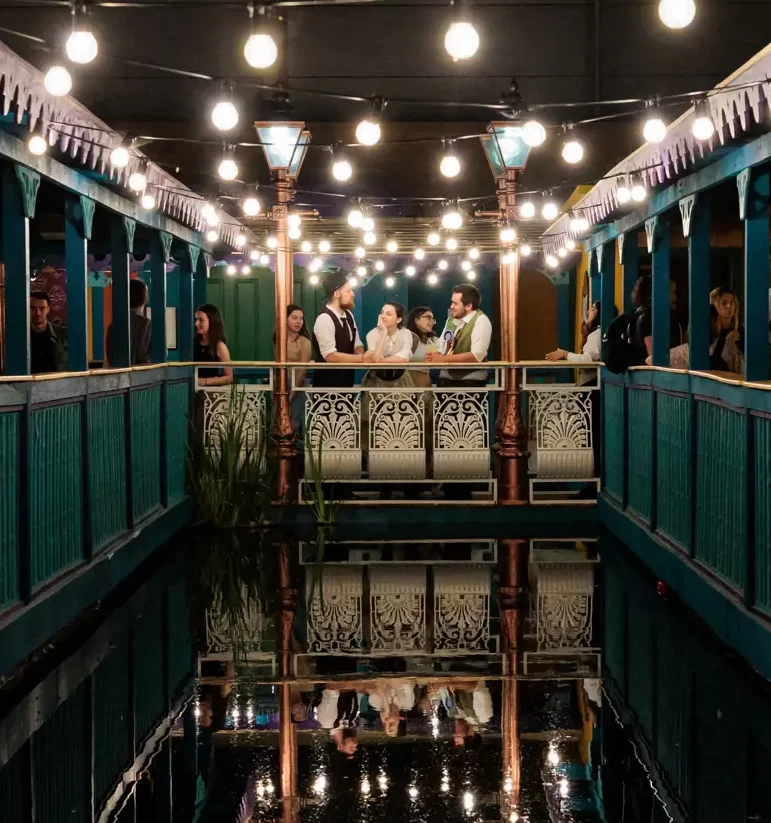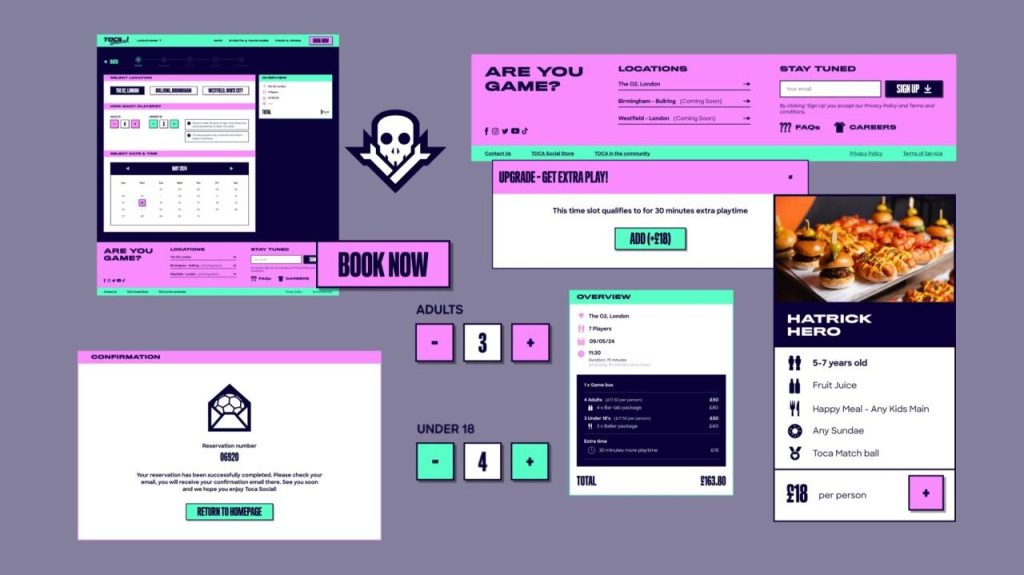Gaming in the real world: How UK cities became adult playgrounds
Something interesting is happening on Britain's streets. Urban gaming is transforming how adults play - not just on their phones or consoles, but out in the physical world. Pubs have evolved into competitive gaming venues, city streets double as treasure hunt routes, and abandoned warehouses now host immersive urban gaming adventures that blend digital concepts with tangible experiences.
This shift isn't just a quirky trend. It reflects our hunger for genuine social connection after years spent in digital bubbles, the creeping influence of gaming culture into mainstream entertainment, and our growing desire for experiences that actually mean something.
From designated play areas to citywide game boards
Remember when play had its proper place? That's changed. Today's adult play breaks free of traditional boundaries, turning entire urban landscapes into living game boards.
Take location-based gaming, for example. Businesses like Hidden City send players on missions through London's streets, turning everyday landmarks into game objectives. It's like Pokémon GO grown up and given a distinctly British twist. We gave their 007 Spectre-themed experience a go at Christmas and would highly recommend!
Then there's the explosion of immersive venues. Escape rooms were just the beginning. Now you'll find multi-room narrative adventures, physical puzzle environments, and competitive social gaming spaces popping up everywhere. Places like Junkyard Golf, and Chance & Counters blend physical space with game structures in increasingly creative ways.
Even traditional sports have been reimagined for city settings. Parkour training facilities, climbing walls built on repurposed urban structures, kayaking in restored urban waterways – they all apply gaming principles like progression systems and achievements to get people moving in previously overlooked spaces.
Why it works: Gaming principles in the physical world
These experiences aren’t succeeding by accident. They’re deliberately applying proven gaming principles to real-world activities.
Achievement systems hook us in. Just like video games use achievements to keep players engaged, these physical spaces use badges, leaderboards and unlockable content to keep us coming back.
Stories provide the glue. London’s Phantom Peak, a steampunk “town” filled with puzzles and interactive characters, creates cohesion through narrative. Players aren’t just completing random challenges – they’re unraveling mysteries and becoming part of an unfolding story.
And perhaps most importantly, these experiences are inherently social. Venue challenges requiring different skills, forcing groups to collaborate by contributing diverse abilities. In a world where genuine social connection feels increasingly rare, there’s something powerful about facing challenges together in physical space.

The psychology: Why adults are drawn to play
So why are grown adults suddenly spending their weekends hunting for clues around Liverpool or competing in high-tech darts competitions?
For one, these experiences provide “good stress” – the kind of manageable challenge that creates focus, engagement, and that satisfying “time flies” sensation psychologists call flow. Clear objectives, manageable risks, immediate feedback – they’re all ingredients for mental refreshment in lives often dominated by ambiguous, long-term stressors.
Then there’s the social element. Physical gaming creates distinctive bonds through shared challenges and memories. In a time when many of us feel isolated despite constant digital connection, these experiences offer something increasingly precious: genuine moments of connection, vulnerability, and shared identity outside of work roles.
The business behind the play
This isn’t just about fun and games – it’s big business. Companies have developed sophisticated models around these experiences:
The most successful venues focus on creating memorable moments rather than traditional service metrics. They design spaces to be photographable, shareable, and variable enough to encourage repeat visits. Flight Club transformed the humble game of darts into a premium social experience through thoughtful gaming elements.
Revenue streams are cleverly diversified. Beyond entry fees, there’s food and drink, merchandise, membership programs, and corporate events. This allows the core experience to remain distinctive while ensuring financial stability.
Who’s playing? Market segments for urban gaming
Different play formats appeal to distinct groups:
Competitive socialising venues like Bounce, Flight Club, and Swingers attract young professionals, corporate groups, and friend circles looking for shared experiences beyond the typical night out.
Meanwhile, story-driven experiences draw in creative professionals, entertainment enthusiasts, and anyone seeking a few hours of escapism. Immersive theatre companies like Secret Cinema and Punchdrunk have pioneered this space, creating detailed worlds that pull participants into narrative adventures.
What’s next for urban gaming?
As this trend evolves, several developments seem likely. Cities themselves are starting to recognise play as a legitimate urban function. The Mayor of London’s Cultural Infrastructure Plan acknowledges the importance of diverse cultural spaces, including interactive and immersive venues, as vital components of the city’s fabric. This represents an evolving perspective in urban planning, where entertainment and play spaces are increasingly valued alongside traditional infrastructure.
We’re also seeing the lines blur between adult and family experiences. Venues that initially catered exclusively to adults now offer family sessions, while family attractions are developing more sophisticated appeals to adults. The future likely holds more multi-generational play experiences that work on different levels simultaneously.
The bottom line
The rise of adult playgrounds across Britain’s cities signals something significant about how we relate to urban spaces, leisure time, and each other. By bringing gaming principles into physical spaces, creators tap into our fundamental human needs for challenge, mastery, social connection, and meaning.
After all, regardless of age, we remain playful creatures at heart. And perhaps our cities work best when they accommodate not just our practical needs, but our deep-seated desire for joy, challenge, and connection.


